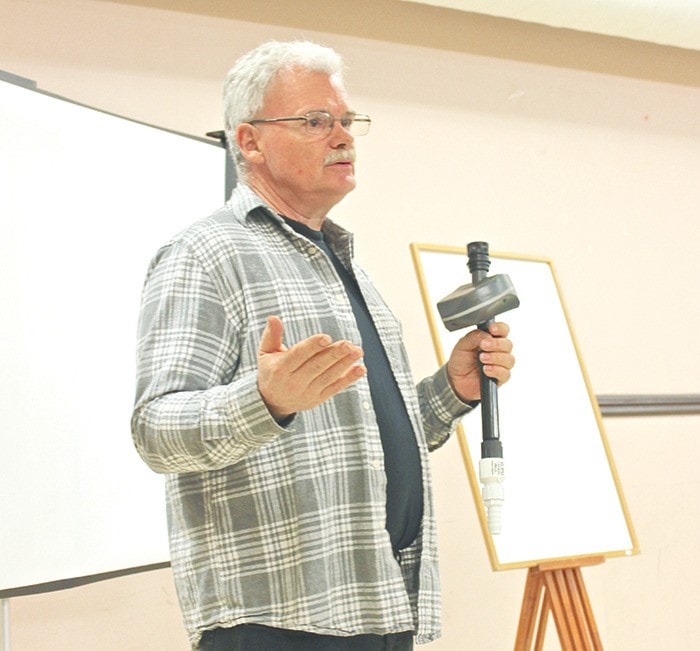If you like standing around for hours each week, playing a stream of water on your parched veggie patch; coiling and uncoiling hoses and moving sprinklers around; paying more than you have to for H2O that your garden doesn’t need; and weeding, weeding, weeding; then continue watering using a garden hose or watering can.
If you’d rather kick back in the shade and enjoy a cool drink, while life sustaining water is delivered in just the right quantities, to exactly the places, and at precisely the right times to keep you plants hydrated and healthy during the summer heat, then you might want to take a look at micro-irrigation.
David Pink of Warmland Irrigation told people attending his presentation at the Cowichan Green Community’s Seedy Sunday event in Duncan March 20 that drip irrigation systems will improve the health and increase the yield of most gardens, allowing enthusiasts to focus on other things.
“Drip irrigation maintains that constant moisture in the soil,” he told a packed room at the Cowichan Tribes Gymnasium Si’em Lelum. “It gives you the ability to deliver what your plants need, when they need it, and in the amounts they need it.”
The supreme irony is that many plants are over-watered during the height of summer, because people mistake plants’ natural responses to extreme heat and sunlight as dehydration. They drown their plants trying to save them.
“Anything you see sort of withering, you want to make sure the sun has been off it for a couple of hours at least before you do anything about it,” he cautioned. “More plants die from over-watering than under watering.”
Better yet, install a system that micro manages distribution of water, maintaining “nearly perfect moisture at the root,” Pink said.
The parts of a micro irrigation system are drippers, emitter hoses and micro sprinklers. They cut water usage to a fraction. A conventional lawn sprinkler, for example, sprays about 300 gallons per hour; drip emitters 1 to 4 gallons; micro sprinklers, 45 gallons.
They also put the water exactly where it needs to be. Pink says the advantages of pinpoint watering, over soaking the whole surface of a yard, include:
• A dramatic decrease in weed growth;
• Healthier soils, because nutrients get leeched away when soil is over-watered;
• Decreased mildew and foliage diseases, because water is kept off plants’ leaves;
• Decreased water consumption.
• Bigger yields.
“We actually get double the yield off our garden than other gardeners,” Pink said.
